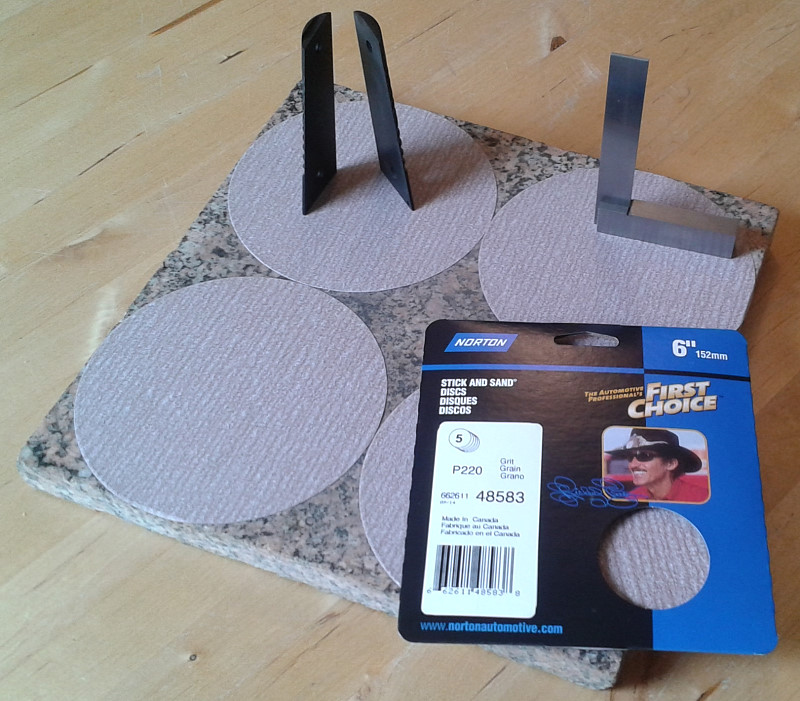It is my experience that most 1911 owners, after having spent many hundreds of dollars on their weapons and accessories,
have a very high standard for most aspects of their firearms as well their other important earthly tools. Most in this
crowd find that gaps between the bottom of their stocks and the magwells are annoying and unacceptable.
It is realistic to acknowledge that few 1911 pistol frames, stocks, or magwells have reliably consistent dimensions. I am often
asked to provide stocks with a little extra material at the base, usually around .030", to allow for fitting to individual
pistols with installed magwells. One method I employ and recommend to custom fit a set of stocks is described below.
Attempting to fit stocks by sanding "freehand" with a piece of sandpaper will rarely give satisfactory results, even by
seasoned craftsmen. Sanding on a perfectly flat abrasive surface will give a more precise removal of material, and there
is a convenient way to prepare such a useful station for this and many other tasks when one needs to make things flat
with a high degree of precision. There is a sandpaper commonly used in the automotive body-work and other industries that
has a sticky material which is evenly applied to the backing. The adhesive used is strong enough to keep the sandpaper
secured to a number of different power sanders, but allows for very easy removal when replacement is necessary. When this
type of sandpaper is placed onto a suitable piece of polished granite or other very flat surface, a versatile "sanding plate"
is created. A precision ground metal plate or a rigid polymer such as a sheet of G-10 can also be used, as long as there is
no warping, voids or texture present.
Various sizes and grits of this sandpaper are available. I have found that the six inch,
220 grit circle works well for me in most materials such as wood, ivory, horn, metal, G-10, and other polymers.
When sanding on the plate, it is convenient to hold onto the stock using the lower screw hole as a gripping point, and,
applying a slow, back and forth motion with the appropriate pressure, remove material evenly from the base until a desired fit
is achieved. A small square can be used during this process as a visual reference to keep the stock vertically as true as possible.
If all one desires is to make stocks perfectly flush to the bottom of the pistol, they can first install them one at a time
with the screws, and, using a razor blade to gently scribe a line onto the back of the stock, mark the location of the
bottom of the frame. Stopping the removal of material just before reaching this line, and then repeatedly fitting between
single sanding strokes is a good idea when getting close to the final fit.
To fit stocks to a magwell, sanding slowly and installing frequently to check the fit will allow for a perfect result.


